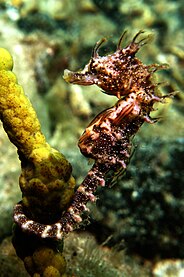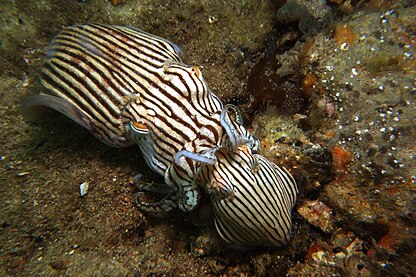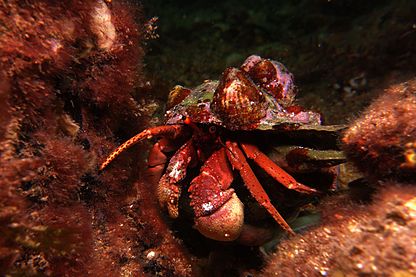Gulf St Vincent
| Gulf St Vincent | |
|---|---|
 Gulf St Vincent is the easternmost of the two inlets | |
| Location | Australia |
| Coordinates | 35°S 138°E / 35°S 138°E |
| Type | Gulf |
| River sources | Bungala, Dry Creek, Field, Gawler, Gilbert, Light, Little Para River, Onkaparinga, Patawalonga, Port, Sturt, Torrens, Wakefield |
| Basin countries | Australia |
| Max. length | 138.9 km (86.3 mi)[1] |
| Max. width | 61.15 km (38.00 mi)[1] |
| Surface area | 6,800 km2 (2,600 sq mi)[2] |
| Average depth | 21 m (69 ft)[2] |
| Max. depth | 40 m (130 ft)[3] |
| Islands | Garden Island Troubridge Island Torrens Island |
| Settlements | Adelaide |
| References | [4] |

Gulf St Vincent is a large inlet of water on the southern coast of Australia, in the state of South Australia. It is bordered by Yorke Peninsula on its west, the mainland and Fleurieu Peninsula to its east and with its entrance as being a line from Troubridge Point on Yorke Peninsula to Cape Jervis on Fleurieu Peninsula.[2]
Adelaide, the South Australian capital, lies midway along the gulf's east coast. Other towns located on the gulf, from west to east include Edithburgh, Port Vincent, Ardrossan and Port Wakefield and Normanville. It was named "Gulph of St. Vincent" by Matthew Flinders on 30 March 1802, in honour of Admiral John Jervis (1st Earl of St Vincent).[5] It was later mapped by Nicolas Baudin, who named it as Golphe Josephine,[6] after his meeting with Flinders at Encounter Bay on 8 April 1802. Due to Flinders' lengthy imprisonment on Mauritius during his return to England, the publication of Baudin's map preceded that of Flinders by three years.
The Adelaide Desalination Plant which is located on Gulf St Vincent's eastern shore in Lonsdale, South Australia, supplies the Adelaide metropolitan area with desalinated water from the gulf. It officially opened in 2013.[7][8]
Environment
The Gulf teems with crustacea and polychaeta, as well as various species of sea squirts and sea urchins. The benthos is a soft sediment shelf, with species of zosteraceae around the mouth of the Port River.
Gallery
|
See also
References
- ^ a b Hydrographic Department, Ministry of Defence (reproduced by the Royal Australian Navy Hydrographic Service) (1983). Gulf of St Vincent and approaches (chart no. 1762).
{{cite book}}: Cite has empty unknown parameter:|coauthors=(help) - ^ a b c Bye, J.A.T. (1976). "Chapter 11:Physical oceanography of Gulf St Vincent and Investigator Strait". In Twidale, C.R.; Tyler, M.J; Webb, B.P (eds.). Natural history of the Adelaide Region. Royal Society of South Australia Inc. p. 143. ISBN 978-0-9596627-0-2.
- ^ South Australia. Department of Marine and Harbors (1985), The Waters of South Australia a series of charts, sailing notes and coastal photographs, Dept. of Marine and Harbors, South Australia, pp. Chart 21, ISBN 978-0-7243-7603-2
- ^ "Place Name Search: Gulf St Vincent". Geoscience Australia. Archived from the original on 5 June 2011. Retrieved 20 June 2014.
{{cite web}}: Unknown parameter|dead-url=ignored (|url-status=suggested) (help) - ^ Matthew Flinders. "South coast. Gulph of St. Vincent". A voyage to Terra Australis. State Library of South Australia. p. 180. Retrieved 12 April 2010.
- ^ Eric Wolanski (editor), Estuaries of Australia in 2050 and Beyond, Dordrecht: Springer, 2014, p.155 (ISBN 9789400770188 & ISBN 9400770189)
- ^ "Adelaide Desalination Plant (ADP)". SA Water. Retrieved 28 July 2015.
- ^ "Adelaide Desalination Plant (Port Stanvac)". ACCIONA Australia. Retrieved 28 July 2015.
External links
- South Australian State Gazetteer PlaceNames Online Search
- Friends of Gulf St Vincent Accessed 14 February 2014.




